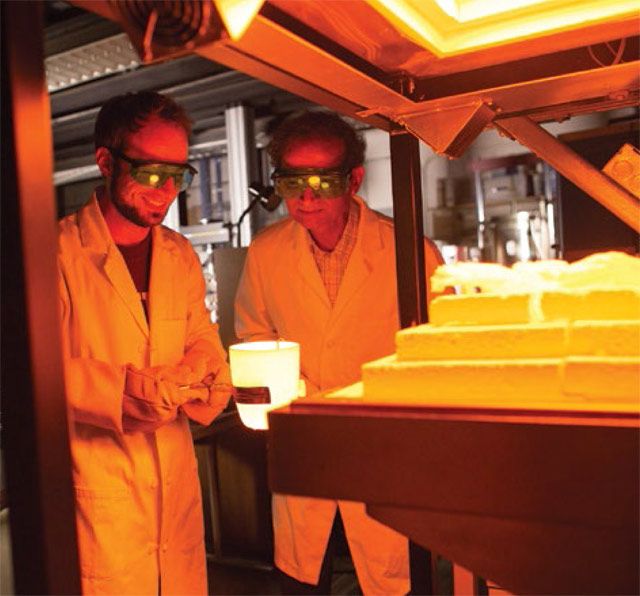In a discovery with potentially broad ramifications, Lehigh researchers have found that applying direct current across glass reduced its melting temperature significantly.
Professor Himanshu Jain materials science and engineering, and doctoral candidate Charles McLaren, were intrigued by the possible applications of this finding –– including more efficient glass manufacturing, nanostamping of glass, and supercapacitors for energy storage. So they set out to develop a more precise understanding of the underlying science of what was occurring in their samples.
The duo had been following the work of Dr. Bernard Roling at the University of Marburg in Germany, who uses electro-thermal poling in his research. The technology can modify glass in remarkable ways using temperature manipulation combined with electrical field applied locally to glass. “Our observations had showed that much of the activity in our experiments occurred where the anode was attached to the glass,” Jain said. “So we came up with a hypothesis, and reached out to Dr. Roling.” The hope was that electro-thermal poling would provide a closer look at the transformations in the glass wrought by heat and electrical voltage.
McLaren traveled to Marburg last fall, and spent a semester running several experiments in Roling’s lab. As he and Jain had posited, McLaren found that there was a very thin and volatile depletion layer that formed in the glass at the anode, as alkali ions migrated into the bulk of the glass. As a result of the migration, electrical resistance in the depletion layer peaked sharply, and then cratered just as dramatically as dielectric breakdown ensued. “It’s like an avalanche,” explained McLaren. “There’s a positive feedback system where the depletion layer first becomes so resistant you get Joule heating, and as that increases the layer gets more conductive, and you get more Joule heating, and so on.”
“Our collaboration with Marburg has helped us see the kinetics of the process, what it takes to deplete a layer,” Jain said. “We could see it happening abruptly in our experiments here at Lehigh, but we had no way to separate out what was occurring in the depletion layer as opposed to the rest of the material. Charlie’s work has allowed us to see the changes in the two regions as a function of time. Now we can think about modifying the surface of glass without changing the rest of the glass.”
The National Science Foundation has provided support for the work in Marburg via the International Materials Institute for New Functionality in Glass at Lehigh; the findings were published in the September 2016 issue of the Journal of Electrochemical Society.

